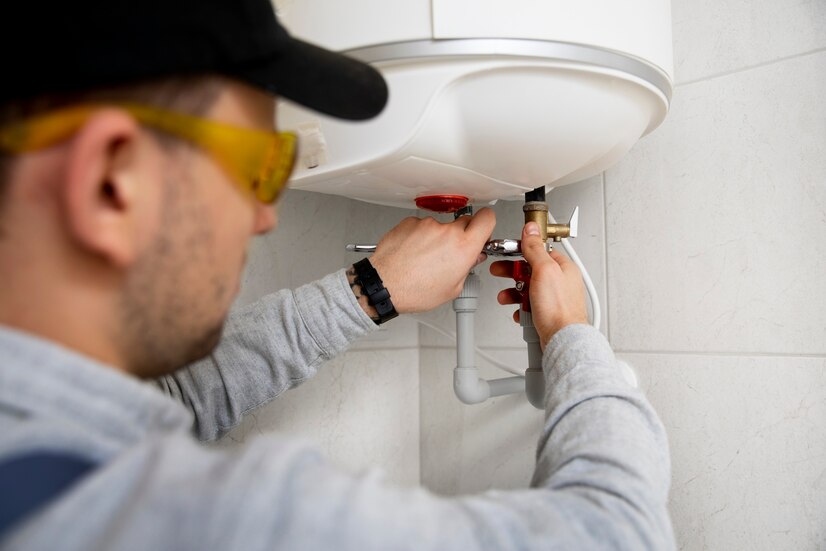Your water heater is a vital component of your home’s plumbing system, providing hot water for various household tasks such as bathing, dishwashing, and laundry. Regular maintenance is crucial to ensure your water heater operates efficiently, conserves energy, and enjoys a long lifespan free of significant problems. Considering the importance of this essential appliance, neglecting its upkeep can lead to more extensive damage and costly repair or replacement down the line. As your Menlo Park, CA plumbing specialists, Shoreway Plumbing is committed to offering valuable guidance on proper water heater maintenance and care to keep your home’s hot water supply running smoothly.
In this comprehensive guide, we will impart essential water heater maintenance tips to help homeowners optimize the unit’s performance, extend its lifespan, preserve its warranty, and enhance efficiency, which can ultimately save energy and reduce utility bills.
By incorporating these maintenance best practices into your routine, you can protect your investment, enjoy uninterrupted hot water supply, and ensure the optimal functioning of your water heater for years to come.
Understanding the Different Types of Water Heaters
Before delving into specific maintenance tips, it’s essential to understand the differences between tank and tankless water heaters, as their maintenance requirements may vary:
- Tank water heaters: These traditional water heaters have an insulated storage tank that holds and heats water until needed. The stored hot water is then delivered through pipes to the desired location.
- Tankless water heaters: Also known as on-demand or instantaneous water heaters, these units heat water directly without storage. When a hot water tap is opened, cold water travels through a pipe and is heated by a gas burner or electric element, providing hot water instantaneously.
The Importance of Regular Inspections and Servicing
Regular inspections and servicing by a professional plumber can help prevent major issues with your water heater, ensuring optimal performance and an extended lifespan. Schedule an annual inspection, especially for older units, to evaluate the system’s efficiency, check for leaks, signs of wear, and sediment buildup, and address any potential issues promptly.
Tips for Maintaining Tank and Tankless Water Heaters
The following maintenance tips apply to both tank and tankless water heaters:
- Adjusting the thermostat for energy efficiency: Most water heaters come with a default temperature setting of 140°F, which can be higher than necessary for general household use. Reducing the temperature to 120°F can help conserve energy, reduce scalding risks and lower your utility bills. To adjust the thermostat, locate the dial on the unit and use a flathead screwdriver to set the temperature to the desired level.
- Testing and replacing the pressure relief valve: The pressure relief valve is a crucial safety feature that releases excess pressure inside the tank to prevent it from exploding. Test the valve at least once a year by lifting the lever and allowing it to snap back, listening for a gurgling sound as water is released. If there’s no water or water continues to flow after the test, the valve should be replaced.
- Insulating your water heater for energy savings: Wrapping your water heater tank with an insulation blanket can reduce heat loss, conserve energy, and lower your utility bills. For tankless units, insulating hot water pipes can also increase energy efficiency. Always follow the manufacturer’s recommendations for proper insulation.
Additionally, some maintenance tips specific to tank water heaters include:
- Flushing the tank to remove sediment buildup: Sediment can accumulate in a tank water heater, reducing efficiency and potentially leading to overheating or tank corrosion. To flush the tank, first turn off the power source, attach a hose to the drain valve, and drain the water into a bucket or drain. Afterward, briefly open the cold water supply valve to stir up sediment, then drain the water again. Repeat until clean water exits the tank.
- Inspecting and replacing the anode rod: The anode rod helps prevent tank corrosion by attracting corrosive elements in the water. Check the anode rod annually by unscrewing it from the top of the tank and examining its condition. If the rod shows significant corrosion or is less than one-half-inch in diameter, replace it.
Conclusion
Proper maintenance of your water heater is crucial to maintaining its optimal performance, extending its lifespan, and enhancing energy efficiency. By understanding the different types of water heaters and following the expert-recommended maintenance tips presented in this guide, you can protect your investment and keep your home’s hot water supply running smoothly and efficiently.
If you require professional assistance with water heater maintenance, repair, or installation in Menlo Park, CA, turn to Shoreway Plumbing for top-quality service and expert advice. Reach out to us to learn more about our services and to schedule an appointment with one of our skilled technicians.

